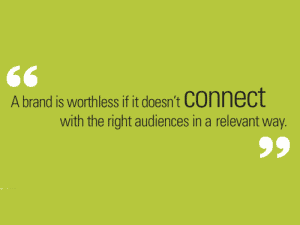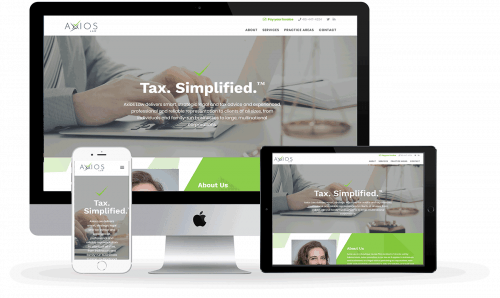 I want to buy a cup of coffee.
I want to buy a cup of coffee.
There are a multitude of different places where I can get a cup of coffee in Toronto, with Starbucks and Tim Hortons as the first to come to mind.
Which will I choose?
From a transactional standpoint, Tim Horton’s is a little bit cheaper than Starbucks, but that’s not really likely to influence my decision.
From a taste standpoint, Starbucks is a little bit better than Tim Horton’s, but that’s not entirely going to influence my decision either.
What about the experience?
If I’m in the mood to get a cup of rich, fine coffee, sit down in a pleasant youthful environment, listen to some light jazz and relax, Starbucks is definitely a better fit.
If I’m on the go, I need to grab a cup of hot, delicious coffee, maybe grab a donut, get in and get out, Tim Horton’s is the way to go.
This illustrates what a brand is. A brand is not so much about the product that a company sells, but more the experience and the feeling that one has with regard to that product. Tim Hortons is great, Starbucks is great, but they’re completely different. And it is because companies want to create a unique experience that a brand is created.
What is a Brand?
 In its simplest terms, a brand is a series of elements designed specifically to reflect upon the experience that a customer has with a company. These elements can consist of the design of the logo, the language used in content, videos and social media, the color scheme, the font choices, vision, mission, buyer persona profiles and even the name of the company.
In its simplest terms, a brand is a series of elements designed specifically to reflect upon the experience that a customer has with a company. These elements can consist of the design of the logo, the language used in content, videos and social media, the color scheme, the font choices, vision, mission, buyer persona profiles and even the name of the company.
What is Branding?
Branding is the construction of the above concept through research, development and execution. The process of branding means getting to understand the needs and wants of your client base very intimately. It is one of the most important elements of a company. If you don’t understand your clients and their needs, if you don’t understand who you are as a company, there is a little chance that you will succeed and drive revenue.
Five Misconceptions About Branding
Branding is an exercise in ego and not really important.
There are very few things as sensible and practical as going through a branding process. To understand concretely who your clients are, what their needs are, who you are as a company, what your culture is, what experience you want to create with your services or products is such a wise investment that it’s actually baffling when companies opt not to do it.
To have a clear path and laser focus on how to market and sell to a targeted prospect base is vital in generating sales. Branding is not to be dismissed as something fluffy or trivial. Serious companies take the branding process very seriously.
Branding is not for services, only products.
It’s true that historically, the branding process has been applied almost entirely to products. But in this day and age, a company offering B2B services needs to have a strong brand as much as any other company.
Think about it. A product is a tangible item, something that people can form an impression by holding, looking, wearing, tasting, etc. When you’re delivering a service, it’s even more vital to have a strong, concrete understanding of the culture behind and the experience of that service. This leads to an increase in authority and credibility and ultimately, it increases trust, which is what one needs to compete successfully with other companies.
There is no ROI for branding.
The return on investment for branding comes from developing a clear understanding of what your client base is like and then catering to them. This allows you to invest your marketing and sales funds properly into targeted prospects.
Without knowing who your clients are, without knowing what experience they’re looking for and what experience you can create for them, you’re going to be throwing a lot of money at the wall and hoping that something sticks.
Who are your clients? What are their pain points? What are they looking for in a positive experience? How old are they? What do they do for a living? How much money do they make? Are they married? Do they have children? What interests do they have? Where are they located?
All of this data is incredibly valuable in ensuring that you’re targeting your marketing to the right people in the right location. It helps you tailor your messaging to them. This dramatically improves the return on investment for sales and marketing, saves you time, saves you money and drives revenue.
On top of that, having a great brand and a great client experience generates loyalty, which can lead to return customers and brand advocacy, in which your customers and clients are telling their friends and family about the great products/services and experience they had.
I have a logo, that’s the same thing as a brand.
A logo, while incredibly important for a company, is simply an identifier of the company. It’s a visual cue to understand what company you’re dealing with. Without a brand though, the logo is unlikely to illicit an emotional response.
A brand has much more depth and is much more detailed than just a logo. Remember that the purpose of a brand is to create a unique identity for your company that differentiates you from your competition. A brand expresses how a company engages its clients, how it wishes its products or services to be received on an emotional level, and how clients feel about the company’s vision, culture, and values.
An effective brand pleases everyone.
That’s not at all what you want to do! A well-realized brand will help you eliminate people that are not ideal customers for your company, and will help you focus in specifically on a targeted group that you want to do business with. These are the people who are most likely to benefit from your services or products, who are the best fit financially for your services or products (they can afford it!), and ultimately who will gain the most.
The outcome of targeting these people is a higher close rate/sale rate. And again, they will act as advocates for your company because they likely have friends and connections that are within the same target audience. Understanding who your clients are is a critical part of the brand development process.
Conclusion
The branding process goes deep and well beyond the creation of a logo and a simple tagline. It’s about effectively communicating, both visually and through written content, the culture, the vision and the benefits of your company, services and products. And it’s about extending that message to the right audience in a meaningful and compelling way.








